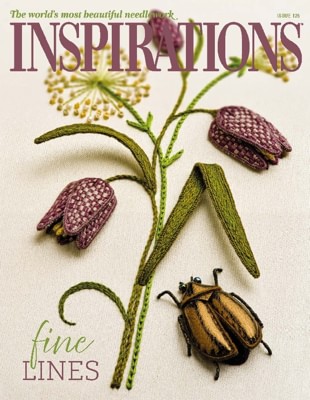Abonnement magazines digitaux. Plus de 6000 titres
Can science missions mitigate the effects of cabin fever?
South Africa has a tight regime for scientists wanting to “overwinter” in Antarctica. The 13-month assignment to an isolated research base on the top of a cliff edge is, as the environment ministry drily put it, “testing”. Average annual temperatures are -16C but drop much lower during the winter darkness. All applicants are subjected to psychometric analysis “to ensure they are able to cope with the isolation, and can work and live with others in the confined space of the bases”, said the Department of Forestry, Fisheries and the Environment. “Only candidates who do not have any negative outcomes from all the background evaluations will be considered.” But can humans ever fully prepare for long-duration remote scientific experiments? The crisis currently facing the overwintering crew at the Sanae IV station,…
Undermining Science
Remember “Sharpiegate”? Back in September 2019, then-President Trump appeared to alter the path of Hurricane Dorian—at least on paper, with a marker. Craig McLean, who had been at the National Oceanic and Atmospheric Administration for nearly 40 years, was the acting chief scientist and head of NOAA Research. Objecting to the controversy contributed to his demotion. He explains what he anticipates for Trump’s second term. DORIAN WAS A nasty hurricane. It took lives in the Caribbean and the Bahamas and was making a move toward the Florida Panhandle. Days out, there was a small chance of tropical storm–force winds in Alabama. The National Weather Service forecasted, correctly, that the storm was going to make a hard right turn and certainly not impact the people of Alabama. But Trump tweets something…
Melting Moments
“The more melt, the more stakes you have to collect. I don’t think I could have carried any more stakes. Nearly a third. That’s the amount of ice lost from New Zealand’s glaciers since 2000. Almost 300. That’s the number of individual glaciers that have vanished forever since we started monitoring them regularly about half a century ago. According to a recent global assessment, New Zealand ranks third after the European Alps and the Caucasus, in Eastern Europe, in the proportion of glacial ice lost to rising temperatures. And the glaciers that remain are now melting at an accelerating pace. In early March, I witnessed the changing icescapes of the Southern Alps first hand when I joined glaciologists on their annual snowline survey. Each year, the team flies across the…
We’re Not Prepared
THE NUMBERS COMING OUT OF LOS ANGELES COUNty are staggering: more than 16,000 buildings destroyed, some 2,000 structures damaged, and over 150,000 people ordered to evacuate. Whole swaths of Pacific Palisades and Altadena have been wiped off the map. Obliterated along with them: basic shelter; countless families’ primary source of wealth; and the incalculable loss of memories, sensations, routines, possessions, and a sense of normalcy. Whenever something like this happens, the vultures of displacement and development start circling. Mike Davis put it succinctly during the Woolsey Fire of 2018 when he was asked what he expected to see after the flames died down: “Bigger mansions.… What tends to disappear is rental properties, trailer parks, people who don’t have adequate insurance.” In other words, the poor and working classes suffer first—and…
Arctic permafrost is now a net emitter of major greenhouse gases
AREAS of permanently frozen ground in northern regions are now emitting more carbon into the atmosphere than they absorb, causing the planet to heat even further, according to the first Arctic-wide estimate of all three major greenhouse gases. Frozen ground, or permafrost, which underlies 15 per cent of the northern hemisphere and contains twice as much carbon as the atmosphere, has shrunk in area by an estimated 7 per cent in 50 years as it thaws. Recent research suggests the thaw will slow but not stop if we can limit global warming to 1.5°C above pre-industrial levels. Yet scientists haven’t been sure whether the permafrost region has become a net emitter of greenhouse gases. Even as the thaw releases more carbon compounds from the once-frozen biological matter in the ground,…
HOW I’M RAISING ECO-FRIENDLY KIDS ON MY TERMS
BEFORE I HAD KIDS, I HAD BIG PLANS. BREAST-feeding, of course. Cloth diapers, absolutely. Only stainless-steel or glass bottles, sippy cups and plates. Cleaning supplies made from white vinegar, lemon and essential oils. The list goes on and on. Here’s the real confession: I didn’t just plan on doing these things myself. As an environmental-health journalist, I’d spent years writing articles about why other parents should do this stuff too. Let me repeat: I wrote them before I had kids and, frankly, had no idea how hard it would be to clean spit-up stains with baking soda or pack zero-waste lunch boxes with only organic homemade meals. The reality check set in fast. When I got pregnant, my husband talked me out of cloth diapers in my first trimester. And…
Supervolcans Comment s’y préparer ?
Le 5 avril 1815, tandis qu’en Europe les guerres napoléoniennes faisaient rage, le volcan indonésien Tambora est entré en éruption, entraînant la mort d’environ 90 000 personnes. Ce n’était que le début : la colonne de cendres et d’aérosols sulfatés crachée par le monstre a atteint la stratosphère et s’est étalée sur tout l’hémisphère Nord, où elle a engendré un hiver volcanique de deux ans durant lesquels la température moyenne globale a chuté de 1°C. Résultat, les récoltes mondiales ont été désastreuses et le climat déstabilisé a provoqué une pandémie de choléra. En deux ans, ce sont des dizaines de millions de décès que l’éruption du Tambora aurait précipités… Et nous ne sommes pas à l’abri de revivre un tel cauchemar ! C’est ce que laisse entendre une récente étude…
L’humain au centre
Le fait main à l’honneur Le craft design dominait à l’Institucion Libre de Ensenanza, un bâtiment ultra-contemporain investi par le Madrid Design Festival. Là, l’événement « Fiesta Design » immergeait les visiteurs, dès le rez-dechaussée, dans de nombreux projets d’artisans, tel ce claustra en brique de Tomás Alía, sculpture participative réalisée dans la région de Castilla-La Mancha. À l’étage, on pouvait admirer les grandes tapisseries Tangible Transformations, de l’artiste et activiste hollandaise Claudy Jongstra (Galerie Villa dell Arte), réalisées à la main, selon des techniques traditionnelles n’utilisant que des teintures végétales, avec la laine des moutons drenthe heath de sa ferme biodynamique. Exposées au Victoria & Albert Museum de Londres ou au MoMA, à New York, ses œuvres procèdent d’un système de production circulaire. La laine, encore elle, formait un…
Passer sous la table
UN MARDI APRÈS-MIDI, DANS UN RESTAURANT BONDÉ du quartier Notre-Dame-de-Grâce, à Montréal, la clientèle se délecte d’un plat végétarien préparé par un chef ayant travaillé au Ritz, pendant qu’un groupe de jazz joue sur une petite scène, dans un coin de l’établissement. Cet endroit, c’est la salle à manger du Dépôt, le plus grand centre communautaire d’alimentation du Canada, qui compte de nombreuses succursales. Ici, 43000 repas ont été servis en 2024. Certains des convives — qu’on appelle, ici, des participants — sont également bénévoles dans la cuisine ou s’occupent de l’entretien. Plus de 250 volontaires s’impliquent annuellement dans cet organisme, dont le but est de nourrir dans la dignité ceux qui ont faim. Le Dépôt a vu le jour en 1986, au moment où des banques alimentaires ouvraient dans…
7 pièges à éviter quand on remplace le sucre blanc
1. Ne pas adapter les quantités Le sirop d’érable ou le miel sont plus sucrés que le sucre blanc. Il est donc important d’adapter les quantités. Pour le sirop d’érable ou le miel, utilisez plutôt 75 g de l’ingrédient pour 100 g de sucre. 2. Oublier de réduire l’humidité dans les recettes Le sirop d’érable et le miel sont liquides, ce qui peut affecter la texture de vos recettes. Réduisez d’environ 25 % les autres ingrédients liquides de la recette pour compenser l’humidité supplémentaire. 3. Ne pas conserver correctement les substituts • Le sirop d’érable se conserve au réfrigérateur après ouverture, sans quoi il pourrait moisir. • Le miel peut cristalliser avec le temps. Conservez-le à température ambiante dans un endroit sec, et non pas au réfrigérateur. Pour le liquéfier,…
NATURE ET DESIGN
VERT PANORAMA DÉCONNEXION RAFRAÎCHISSANTE CONTRASTE EN COULEURS Des campagnes idylliques de Suisse à celles, tout autant authentiques et préservées, du Lot-et-Garonne: c'est près de Lectoure que les propriétaires de cette maison du XVIIIe ont trouvé le cadre de vie qu'ils recherchaient. Après des années professionnelles effervescentes, François Heitz et son épouse ont opéré un changement radical. « Je me suis réveillé le jour de mes 50 ans avec un besoin vital de renouveau. J'ai démissionné dans la journée! » se souvient François. Au cœur d'une propriété de plusieurs hectares, la demeure est entourée de dépendances formant un hameau. Transformée au fil des siècles, la maison était dans la même famille depuis une centaine d'années. Occupé uniquement l'été, sans chauffage ni isolation, l'ensemble avait besoin d'une restauration intégrale pour y vivre au…
La fabrique des nouveaux récits
« Innombrables sont les récits du monde. » C'est par cette affirmation que Roland Barthes commence son Introduction à l'analyse structurale des récits. Depuis que l'homme est doué de langage, de grands récits parcourent la planète. Cosmogonie hellénique, féodalisme chrétien ou confucianisme asiatique, ces histoires structurent un espace sur des valeurs, des modes de vie et des objectifs à atteindre. Véhiculés par la parole, les livres ou les mythes, ces narrations donnent des clés pour se projeter vers l'avenir. Depuis le début du xxe siècle, tout s'accélère et les récits ont trouvé de nouveaux modes de diffusion. Radio, cinéma, télévision, publicité… et depuis peu, Internet. Avec la mondialisation, une histoire dominante écrase tout: l'American way of life. L'homo economicus (sur)consomme pour signifier qu'il existe. Le récit d'une société productiviste, donc, où…









